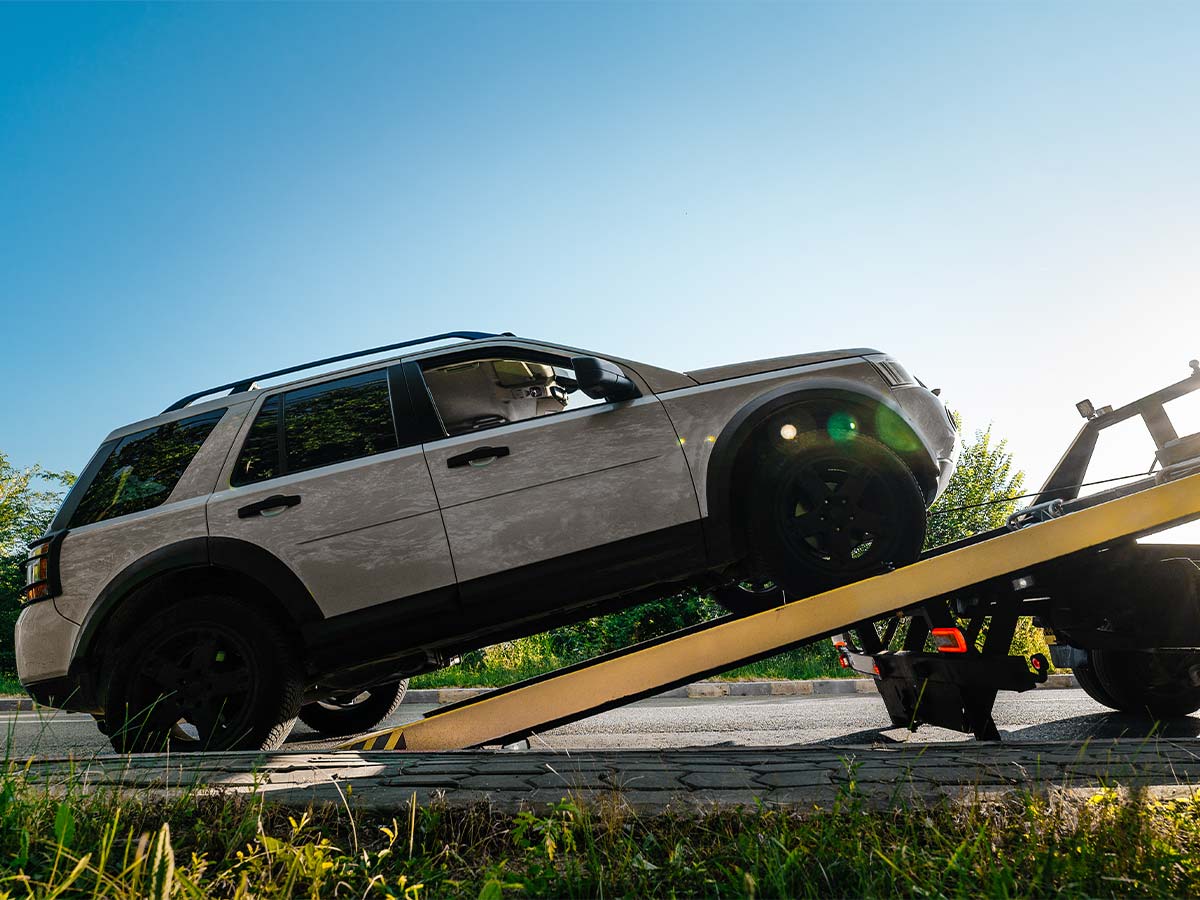Insured with a local Desjardins Agent?
Log in to My AccountNot sure which login to choose?
If you’re insured with us directly, log in to your Online Services account.
Choose this option if you contact us by phone, and you usually speak to different insurance advisors when you call.
If you’re insured with a local Desjardins Agent, log in to My Account.
Choose this option if you know your Agent by name, and they have an office in your local area.
After the initial panic wears off, you realize it was just a rock. The bad news? That rock was big enough to leave a crack behind.
We’ve all experienced this at one time or another, and it’s probably left us with plenty of questions, like “can I patch this up myself? Or should I go to a mechanic?” and “does the entire windshield need to be replaced?”
Don’t be blindsided by broken glass – find out the answers to these questions and more with the following windshield repair tips.
Can It Be Repaired?
First and foremost, you’ll want to determine whether your affected windshield can be repaired, or whether a full replacement is necessary.
When you get home, take a good look at the damage, using a magnifying class if needed.
Your windshield is repairable if:
- The crack is shorter than the length of a $5 bill
- The chip is smaller than the diameter of a quarter
- The damage is small and circular
- The damage is fresh
Your windshield should be replaced if:
- The crack is longer than the length of a $5 bill
- The chip is larger than the diameter of a quarter
- The damage is directly in the driver’s line of sight
- There are multiple cracks
- The damage is deep, penetrating the inner layer of safety glass
- The damage is directly over a heating element or radio antenna
- The crack reaches into the windshield’s edges
As a rule of thumb, a chip that sits perpendicular to the surface of the glass, or is at a shallow angle, can be repaired – this includes chips that are leaf-shaped, cone-shaped, and ones that haven’t flaked off a large piece of glass.
Note: Because long cracks aren’t repairable, it’s important to get a small chip fixed beforeit turns into a long crack.
Identifying the Crack
While you’re surveying the damage, take some time to “read” the crack. There are a handful of windshield crack types:
- Star cracks are those that have a centre with small, radiating cracks
- Bulls-eye cracks are those that have a circular rock chip with a centre
- Half-moon cracks are those that have a bulls-eye break with an incomplete circle
- Combination cracks are those that have the circular shape of the bulls-eye and the radiating cracks of the star crack
Keep a Small Crack from Turning Into a Big One
When the damage is done, but you still have places to go, there are a few things you can do in order to prevent a small windshield chip from turning into a big headache.
Protect the Damaged Area
Seal the crack or chip to prevent it from spreading any further: clean out the area with a dry towel, then use clear tape or nail polish to seal the damage, protecting it from dirt and debris.
Avoid Drastic Temperature Changes
Extreme temperature changes can make a small crack spread: avoid washing your car with cold water in summertime, or blasting the air conditioner on a hot day.
Be Careful When Handling the Damaged Windshield
Avoid placing too much force on your cracked windshield: for example, when washing or clearing ice or snow, don’t press against the glass too hard – this stresses the fracture and could lead to your entire windshield breaking.
Avoid Aggressive Driving
If you’re driving around with a crack or chip in your windshield, make sure you’re not putting unnecessary stress on the damaged area by driving roughly or aggressively. Also, avoid slamming your car doors, or driving over potholes and other obstacles.
The Repair Options
Do-It-Yourself
If you’ve determined that your windshield is repairable, and you’re willing to take a crack and fixing it yourself, there are a variety of repair kits out there to help you patch things up.
These kits come with all the elements necessary for repairing a minor windshield crack or chip, like resin and an injector. Retailers like Wal-Mart and Sears, as well as traditional auto parts stores, often carry windshield repair kits.
Leave It to the Pros
If the chip or crack is too large or deep for a DIY repair – or you simply feel more comfortable leaving the glass-fixing to the pros! – then it’s time to drive down to your local auto glass technician.
What happens next? Your technician will clean the area thoroughly, then drill a hole in the glass, into which she will attach an injector tool that will seal the chip or crack with a special resin. This resin will then be cured and polished. All of this takes less than an hour – sometimes even thirty minutes.
The Insurance Side of Things
After inspecting the damage and identifying the crack, you’ll probably be asking yourself: is this covered by my insurance? The answer is: probably! Many windshield repairs are covered by your insurer. If a full windshield replacement is needed, however, you’ll be responsible for paying the deductible – that’s one more reason to get that small chip fixed before it gets any bigger.
Not sure where to start with your claims process? We offer a step-by-step Auto Glass Breakage Guide that will get you from chip to fix in no time!
Windshield Repair 101: Questions, Answers, Tips
Picture this: you’re strolling down the highway, the radio’s blaring, the sun is shining, when – out of nowhere – there’s a blow at your windshield.
These tips are provided for information and prevention purposes only. They are general in nature, and Desjardins Insurance cannot be held liable for them. We recommend using caution and consulting an expert for comprehensive, tailored advice.
In Quebec, Desjardins Insurance refers to Desjardins General Insurance Inc. In Ontario and Alberta, Desjardins Insurance refers to Certas Direct Insurance Company, underwriter of automobile and property insurance.



